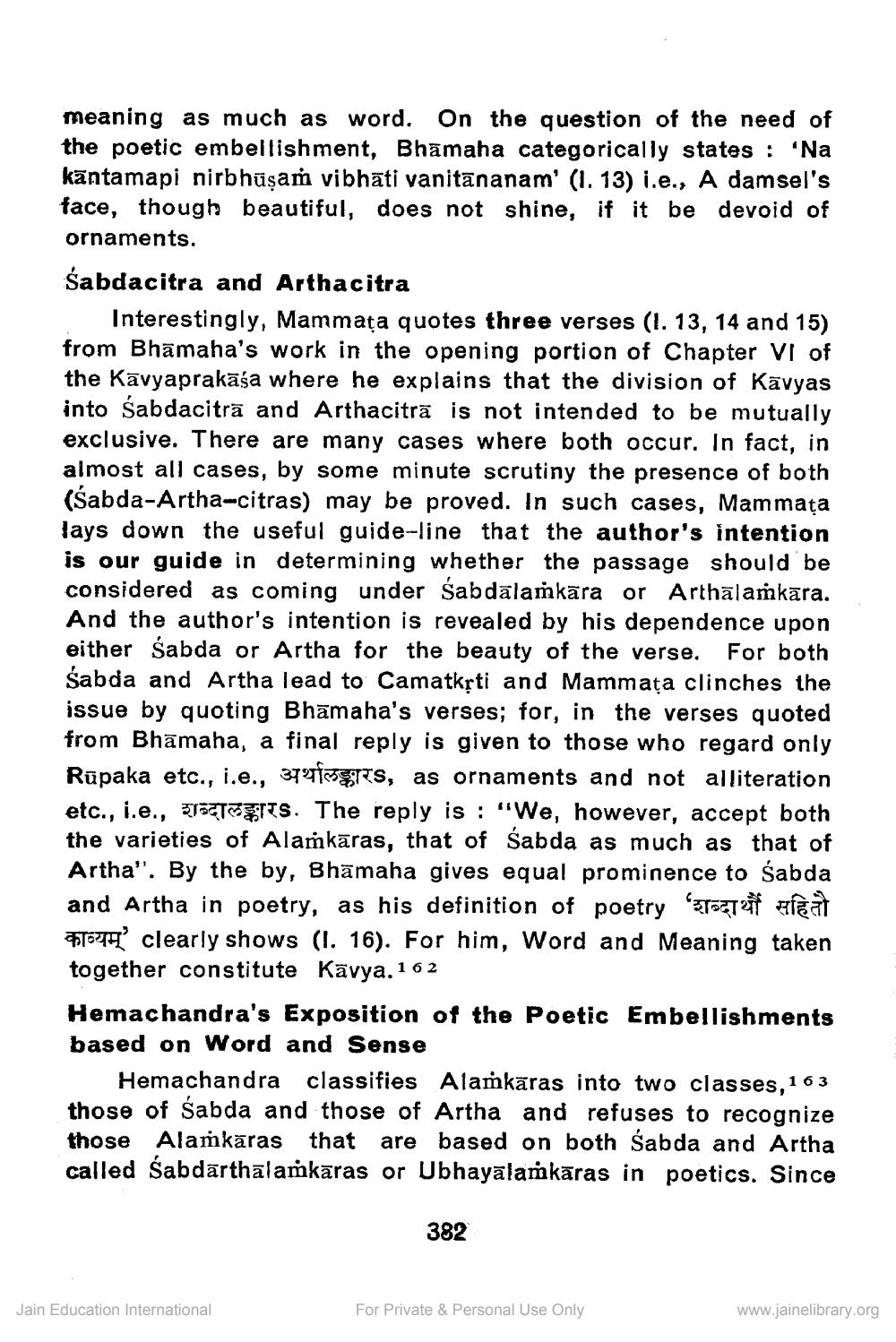________________
meaning as much as word. On the question of the need of the poetic embellishment, Bhamaha categorically states: 'Na kāntamapi nirbhūṣaṁ vibhāti vanitānanam' (I. 13) i.e., A damsel's face, though beautiful, does not shine, if it be devoid of ornaments.
Sabdacitra and Arthacitra
Interestingly, Mammata quotes three verses (l. 13, 14 and 15) from Bhamaha's work in the opening portion of Chapter VI of the Kavyaprakāśa where he explains that the division of Kavyas into Sabdacitra and Arthacitra is not intended to be mutually exclusive. There are many cases where both occur. In fact, in almost all cases, by some minute scrutiny the presence of both (Sabda-Artha-citras) may be proved. In such cases, Mammata lays down the useful guide-line that the author's intention is our guide in determining whether the passage should be considered as coming under Sabdalamkara or Arthalaṁkāra. And the author's intention is revealed by his dependence upon either Sabda or Artha for the beauty of the verse. For both Sabda and Artha lead to Camatkṛti and Mammața clinches the issue by quoting Bhamaha's verses; for, in the verses quoted from Bhamaha, a final reply is given to those who regard only Rūpaka etc., i.e., fs, as ornaments and not alliteration etc., i.e., Ts. The reply is: "We, however, accept both the varieties of Alamkaras, that of Sabda as much as that of Artha". By the by, Bhamaha gives equal prominence to Sabda and Artha in poetry, as his definition of poetry
clearly shows (I. 16). For him, Word and Meaning taken together constitute Kävya. 162
Hemachandra's Exposition of the Poetic Embellishments based on Word and Sense
Hemachandra classifies Alamkaras into two classes, 163 those of Sabda and those of Artha and refuses to recognize those Alaṁkāras that are based on both Sabda and Artha called Sabdarthalaṁkāras or Ubhayalaṁkaras in poetics. Since
Jain Education International
382
For Private & Personal Use Only
www.jainelibrary.org




